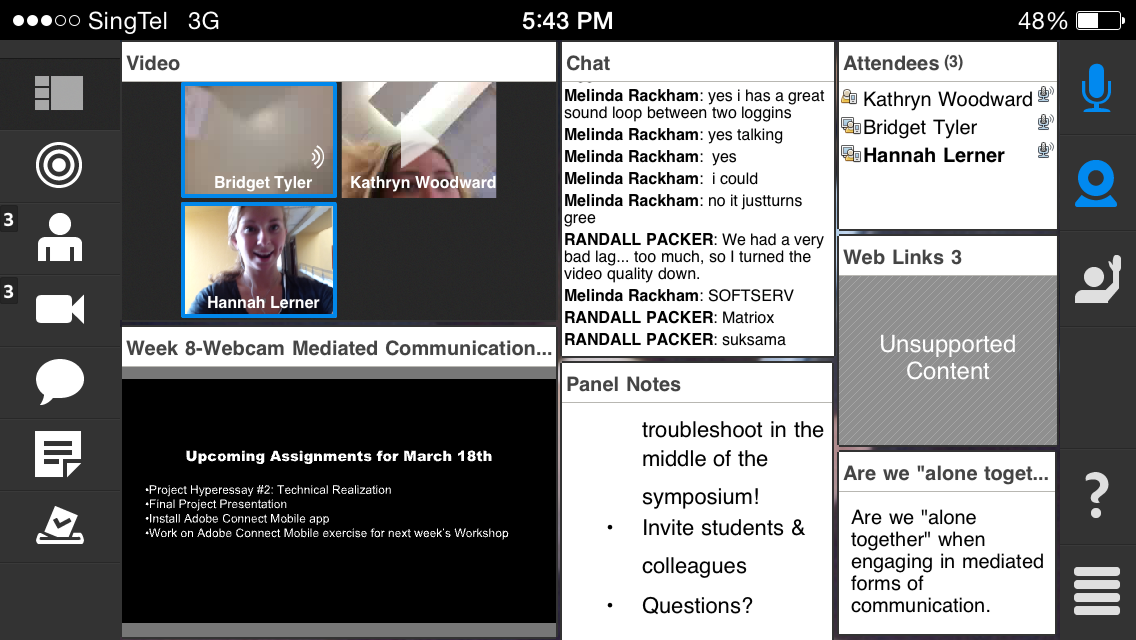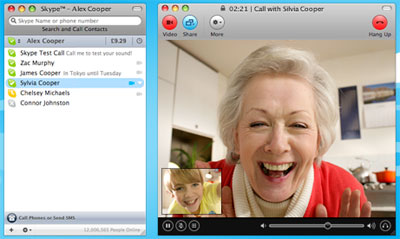The title of the Symposium Performance/Cyberformance, “we r now[here]” causes enough intrigue within itself. It questions the ability of the virtual world to collapse time and space to create intimate connections in the third space. Our class of Media and Performance was lucky enough to be a part of this exciting experiment, and it was no small feat.
Our class began by participating in Mobile Cam Exercises. The first of the series included engaging with another student on Adobe Connect Mobile in order to test out our connections and recognize some of the bugs and issues that could arise during the performance. My experience with this included many bugs, but so it goes in the virtual world.
The second and third exercises were discoveries and rehearsals of our intended future journey from our personal space to the collective performance space in the ADM library. Along the way, we noticed noises, connection drop outs, relevant images, and the timing of our journey.
The cast of our performance met up again in the virtual world on a collective writing app called Pirate Pad. Here, we collaborated with written text to poetically describe the experience with the virtual world and the meaning behind the title of “we r now[here].”
“People from anywhere in the world could appear as avatars and relate to one another through text, movement, and other forms of expression” So Far and Yet So Close: Lessons Drawn from Telematic Improvisation by Adrienne Jenik
Finally, on the evening of March 31st, our performance came to life. This approximately 45-minute exhibit was presented to the curious members of our audience as they watched before their eyes, the collapse of time and space.
The entire process of the Mobile Cam Exercises, Pirate Pad, and rehearsals were meant to allow us to gain a sense of comfort within this virtual world. The timing and our images had to be well thought out which does not come without practice. When individuals engage in a conversation on a social app such as Skype, it may take a few minutes for them to get comfortable and finally forget the distance between them. In turn, “the traditional rules of etiquette” can be forgotten:
“A virtual space creates social situations without traditional rules of etiquette.” Kit Galloway and Sherrie Rabinowitz, “Welcome to ‘Electronic Café International’” Page 347
Our repeated and consistent use of our mobile phones and this app allow us to break the barriers of distance and further connects our spaces, allowing us to forget the limitations of the virtual world.
There are a variety of works that were discussed within our class which aided in our ability to comprehend and improve upon our performance for “we r now[here].” The Big Kiss by Annie Abrahams is a work that questions distance and its impact on intimacy shared within the virtual world. Similarly, our performance was in contest with the ideas of distance as we began physically separated in the different rooms (even by different countries as Ashley was in Canada), but connected on the same screen in the library. Eventually, we were physically together, but seemingly distanced within our separate spaces on the screen. Kit Galloway and Sherrie Rabinowitz, the authors of Hole-In-Space, describe in their text, “Welcome to ‘Electronic Café International’” this breaking of barriers with physical separation or distance:
“We first explored composite-image space because we wanted to create a performance place with no geographical boundaries, in which we could collaborate with no geographical boundaries.” (Page 347)
There are moments within our performance that relate to our experiments with the Collective Body on flickr and the Telematic Embrace on Adobe Connect. By placing each of our cameras on our faces to create “selfies,” we are reminded back to our previous experiments that collapsed our physical separation by connecting visually in the virtual world via these similar actions.
In conclusion, this work, process, and performance allowed me to further understand the true meaning of distance and time: there isn’t really any meaning in it at all.
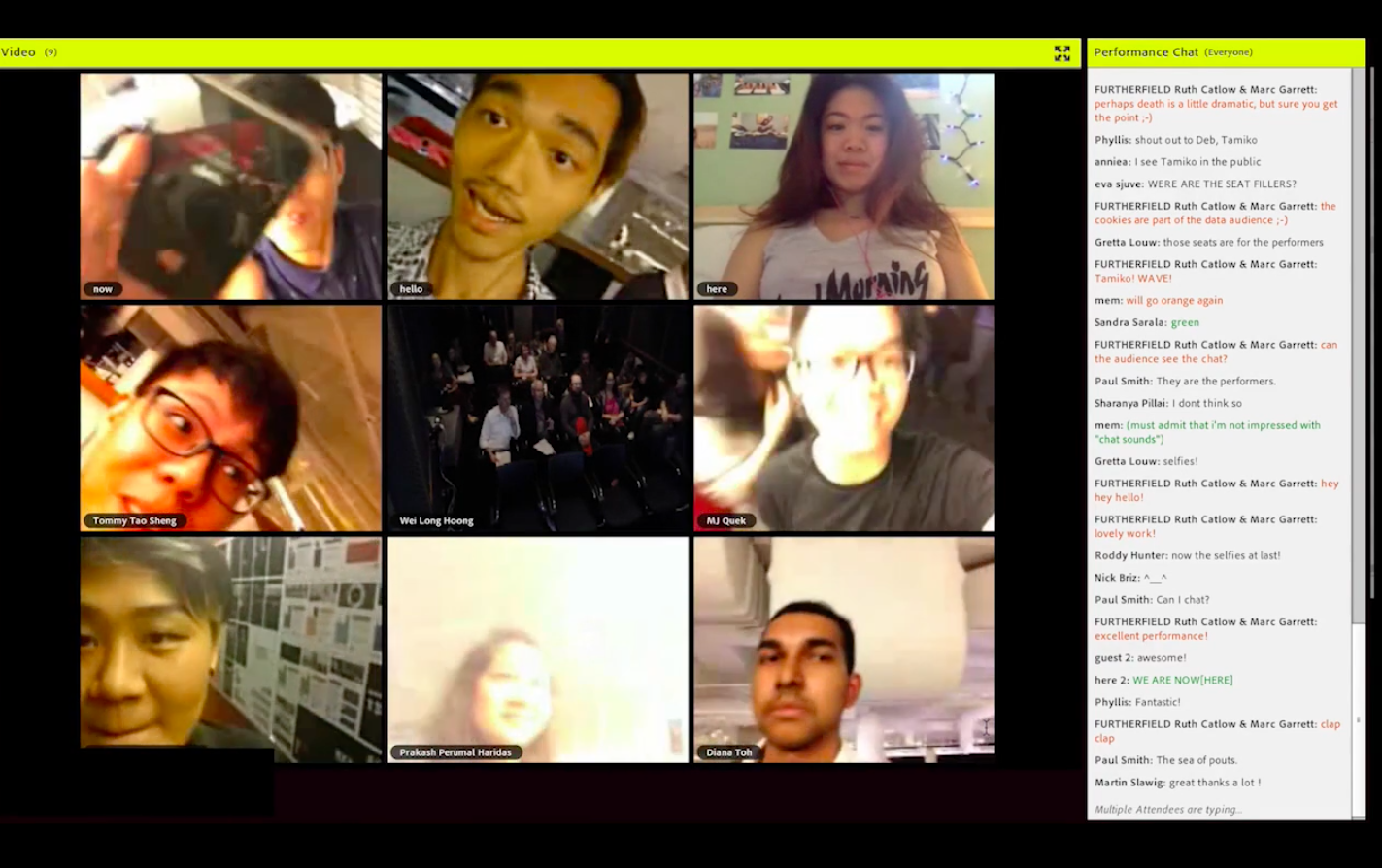
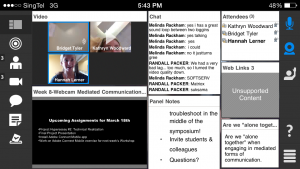
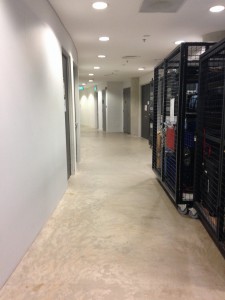



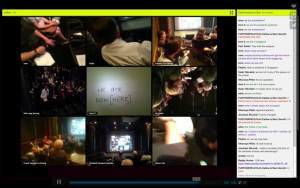


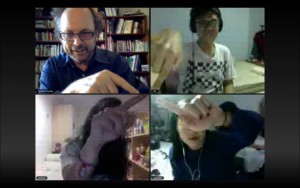



![We R Here [Now] Response](https://oss.adm.ntu.edu.sg/n1404301k/wp-content/uploads/sites/113/2015/03/62629iDFFB0A81EB5D32BB.jpeg)
